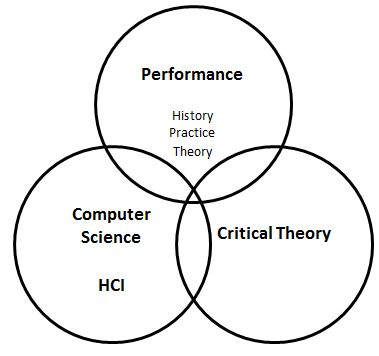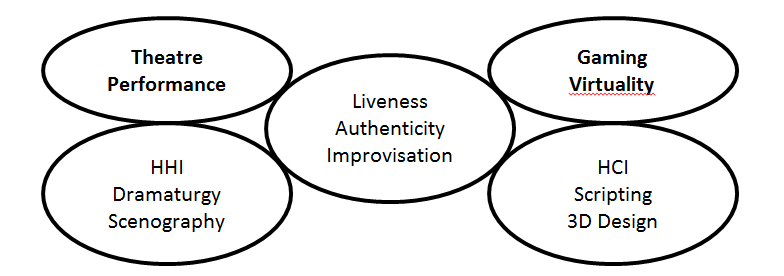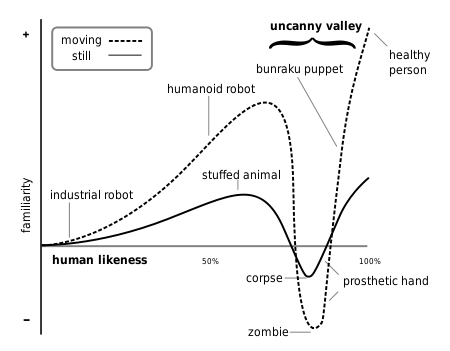The research is located at the intersection between Computer Science and the Performing Arts and is informed by contemporary critical theory on performance and technology, producing an interdisciplinary enquiry illustrated in the diagram
below:

The Computer Science/HCI aspect investigates the use of natural computing interfaces such as gesture and voice, combined with high performance multimodal delivery of audio, video, text and 3D graphics. The research further examines the necessary software and systems platforms that can provide engaging content production and performance delivery as exemplified in Computer Gaming.
The research is informed by contemporary critical theory on the relationships between performance, technology, culture and society.
Reference is made to historical and current practise in the use of technology in performance art and key critics and theorists, acknowledging performative notions of liveness, authenticity and improvisation.

PhD Title:
Intermedial performance and improvisation.
An investigation into the application and effectiveness of appropriate technologies for the creation and delivery of live immersive and improvisational theatrical performance.
At this later stage of the research (2015) The “The PerformativeTurn” is now regarded as a key influence on the the delivery and analysis of the research.
Technologies
Technologies include 3D gesture systems such as the Kinect, games engines for the production and delivery of content, projectors and projection mapping, voice recognition, immersive headsets.
Research questions
What appropriate technologies can be used to enhance the actor’s performance, the audiences experience and create new genres of technology mediated performance?
What conceptual and software models might support multiple storylines and improvisation?
Methodologies
A key methodology is practice based research, involving the production, enactment, documentation and evaluation of prototype scenarios.
The iterative development of the prototypes is documented in the research blog of the website serving as an exegesis, whilst the performative examples and contemporary research pages form the basis of an artistic audit.
The methodology draws from two key texts:
Nelson, Robert (2013) Practice as Research in the Arts.
Haseman, Brad (2006) A Manifesto for Performative Research.
Critical Issues
The effectiveness of interactive technology in enhancing the liveness, authenticity and improvisational possibilities within performance.
Authenticity and liveness (Phelan, Auslander)
The role of the virtual in performance.
Lacan and the double/the mirror
The potential of the technologically uncanny and the artifice of mimesis
The Valley of the Uncanny
Graph illustrating the Uncanny Valley in relationship to robotics.
(The term was coined by robotics professor Masahiro Mori in 1970)
The vertical axis, familiarity, represents how comfortable (+/-) a human being feels encountering a synthetic creation; the horizontal axis indicates human likeness, the further to the left the creation is less like a human, to the right more so. The Uncanny Valley occurs when a representation appears nearly human but not quite and produces a sense of unease and creepiness in the viewer. The Uncanny Valley is a key concept in computer graphic representations of humans in gaming and films and in the the quest to produce human like robots.
Valley of the Uncanny Real Time Computer Animation (2013)
